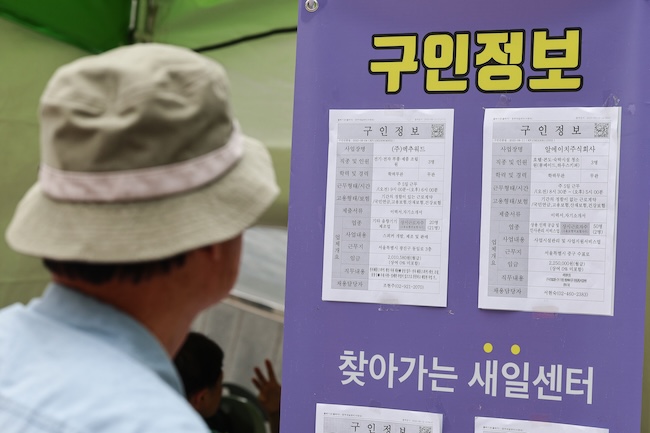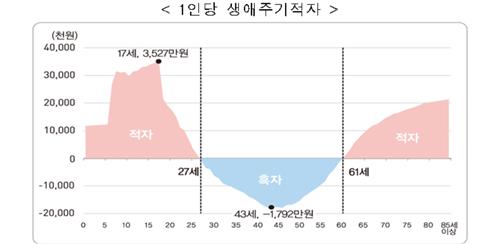
The report underscores the ongoing challenge of securing financial stability for the elderly. (Image courtesy of Yonhap)
SEJONG, Nov. 29 (Korea Bizwire) – A recent report from Statistics Korea based on National Transfer Account data from 2021 has revealed that the individual economic journey of South Koreans hits its apex at the age of 43, with surplus income totaling 17.92 million won, only to dip to a deficit from age 61 onwards, with spending surpassing income. The report underscores the ongoing challenge of securing financial stability for the elderly.
Analyzing the economic lifecycle of South Koreans, the working-age population (15-64 years) enjoys an aggregate surplus of 179.7 trillion won, while deficits of 151.8 trillion won and 136.7 trillion won, respectively, are faced by the young (0-14 years) and the elderly (65 years and above).
Over the years, the age at which the first surplus is achieved has remained stable at an age of around 27 or 28 years. However, the age at which deficits return has shifted, gradually increasing from 56 in 2010 to 61 in 2021.

The age at which the first surplus is achieved has remained stable at an age of around 27 or 28 years. (Image courtesy of Statistics Korea)
In 2021, total consumption amounted to 1,148.8 trillion won, with labor income standing at 1,040 trillion won, resulting in a deficit of 108.8 trillion won.
Consumption increased by 6.2 percent compared to the previous year across all age groups, and the peak age for consumption was 17, totaling 35.75 million won. Spending among those in the younger age group was heavily influenced by education costs, while health expenses dominated spending for the elderly.
Labor income increased by 5.7 percent from the previous year, with the working-age group contributing 95.8 percent to the total labor income. However, the labor income of the elderly experienced a rapid 19.2 percent increase compared to the previous year.
Per capita labor income gradually increased until the age of 43, peaking at 3.9 million won, after which it declined. Wage income per capita was highest among those in their 40s, while income among the self-employed reached its peak for those in their 50s.
Examining the age distribution structure, the working-age group experienced a net outflow of 179.7 trillion won, while both the young and elderly populations saw net inflows of 151.8 trillion won and 136.7 trillion won, respectively.
The National Transfer Account data provides insights into the economic activities of individuals based on age, utilizing information on labor income and consumption of the entire population. As South Korea grapples with deepening demographic challenges, understanding economic resource allocation and redistribution based on age is becoming increasingly crucial.
Ashley Song (ashley@koreabizwire.com)






